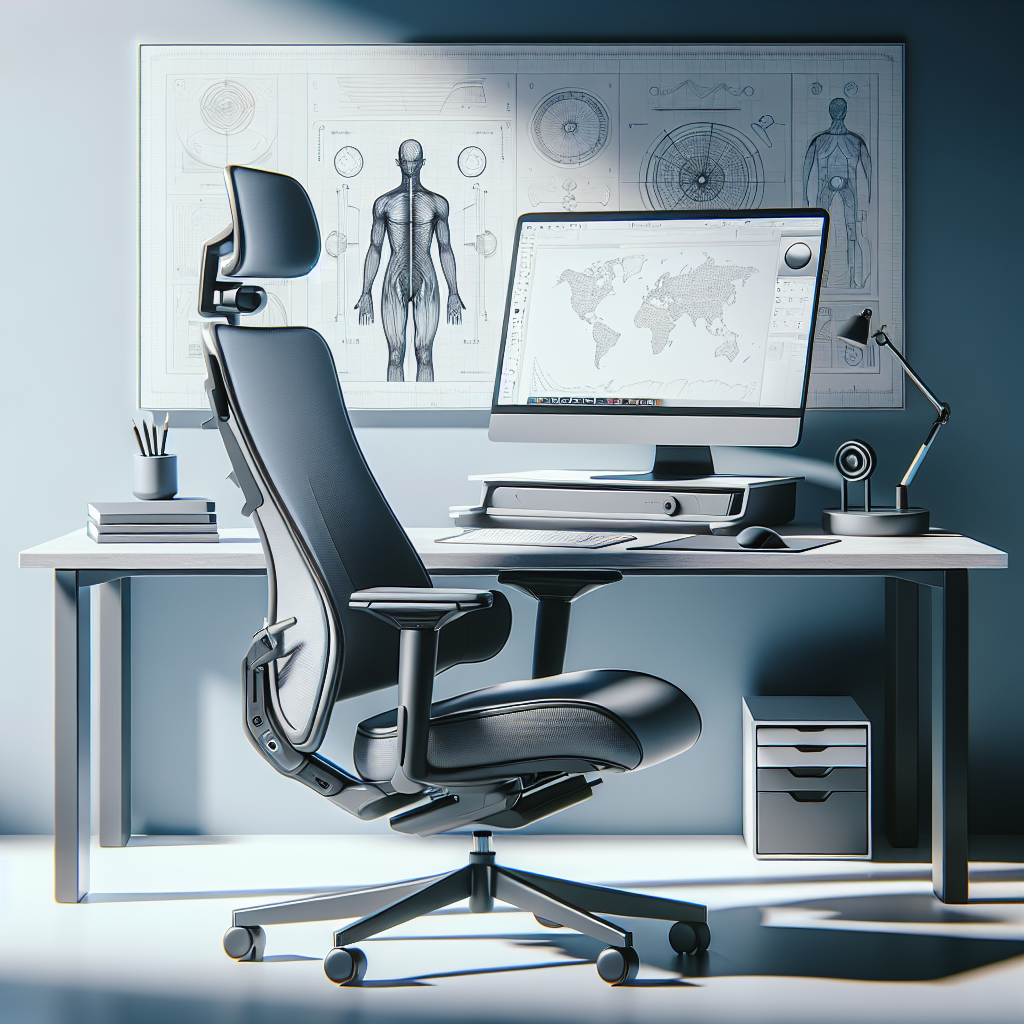
Introduction
In an ever-evolving world where the demands of work and lifestyle are constantly increasing, the concept of ergonomics has gained substantial attention. The phrase When Comfort Meets Performance: The Science Behind Ergonomics eloquently captures a critical aspect of our daily lives: the balance between comfort and productivity. Imagine a workspace where you can focus intensely without the distracting tug of discomfort. This scenario isn’t merely a figment of imagination—it is a feasible goal through the science of ergonomics.
As more corporations and individuals dedicate resources to understand and apply ergonomic principles, the importance of comfort in fostering performance becomes undeniable. The interplay between these two domains isn’t just about reducing physical strain; it’s about enhancing cognitive function, creativity, and overall well-being. Let’s delve into this fascinating subject and explore how we can harness ergonomic science to optimize our daily experiences.
The Foundation of Ergonomics
What is Ergonomics?
Ergonomics is the science of designing workplaces, products, and systems to fit the users’ needs, ultimately promoting safety, efficiency, and comfort. Rooted in various disciplines such as anatomy, psychology, and design engineering, this field offers insights aimed at improving the interaction between humans and their environment.
Historical Context
The roots of modern ergonomics trace back to World War II when the need for improved equipment and environments for workers became evident. With advances in technology and psychology, ergonomics has transformed into a robust framework applicable across various sectors today.
The Dual Role of Comfort and Performance
The essence of ergonomics lies in its dual focus on comfort and performance. When comfort meets performance, individuals can minimize physical strain while maximizing productivity. For example, consider an ergonomic chair designed to support the natural curvature of the spine; it fosters comfort which in turn allows for heightened focus.
Key Components of Ergonomics
1. Physical Ergonomics
Physical ergonomics refers to the human body’s anatomical and physiological characteristics. This branch examines how physical stressors—like posture, repetitive motions, and lifting techniques—affect performance and comfort.
Case Study: The Office Chair Revolution
One well-known case study is the development of the Aeron chair by Herman Miller. Designed based on extensive research into body mechanics, the chair adapts to the user’s shape, promoting lower back support and reducing pressure points. Since its release, companies that adopted this chair reported a 17% decrease in absenteeism due to discomfort, illustrating the direct correlation between comfort and productivity.
2. Cognitive Ergonomics
Cognitive ergonomics tackles how mental processes affect human interaction and performance. This branch considers factors such as decision-making, memory, and perception. Workspaces that enhance cognitive ergonomics include well-designed workflow layouts and intuitive software systems.
Case Study: The Airline Cockpit Redesign
Consider the case of airline cockpits. Following multiple incidents attributed to pilot error, redesigns focused on reducing cognitive load by streamlining instrument displays and controls. These changes resulted in a notable decline in mistakes made during flight operations, emphasizing how cognitive ergonomics can enhance both safety and efficiency.
3. Organizational Ergonomics
Organizational ergonomics examines how work system structures affect human behaviour and performance. This includes aspects such as communication, teamwork, and management systems.
Case Study: Toyota Production System
Toyota revolutionized manufacturing with its production system that emphasizes respect for people and continuous improvement. By honing in on ergonomic principles, Toyota found that fostering a culture of safety and ergonomics led to increased employee morale, decreased errors, and ultimately improved productivity—proving that an organizational commitment to ergonomics yields significant performance benefits.
The Intersection of Ergonomics and Technology
The Role of Technology in Ergonomics
As our workplaces increasingly incorporate technology, the relationship between ergonomics and digital tools becomes paramount. Whether it’s adjustable desks, wearable technology, or specialized software, these innovations are designed with user comfort and performance in mind.
Wearable Technology: The Future of Ergonomics
Recent advancements in wearable technology have enabled real-time monitoring of physical activity and posture. Devices like smartwatches and fitness trackers can provide users with data to encourage ergonomic practices. For example, alerts about standing up after prolonged periods of sitting can create a healthier work environment.
Virtual Reality and Ergonomics
The integration of Virtual Reality (VR) offers exciting possibilities for ergonomic training. By simulating real-world environments, workers can engage in ergonomic practices in a controlled setting, improving their skills and understanding of best practices before they step into the actual workspace.
Practical Applications of Ergonomics
Ergonomic Assessments
Conducting ergonomic assessments in workplaces is an effective method to identify risk factors and improve employee comfort and productivity. Different tools and methodologies are available to evaluate the ergonomic conditions of a work environment systematically.
Table: Common Ergonomic Assessment Tools
| Tool Name | Purpose |
|---|---|
| Rapid Upper Limb Assessment (RULA) | Assesses posture and muscle usage |
| Rapid Entire Body Assessment (REBA) | Evaluates whole-body postures and movements |
| Occupational Safety and Health Administration (OSHA) checklists | Basic evaluations for workplace safety |
Creating Ergonomically-Friendly Workspaces
When designing workspaces, consider factors such as chair height, desk positioning, and ambient lighting. Implementing adjustable workstations, proper monitor placement, and anti-fatigue mats can significantly enhance comfort and performance outcomes.
Case Study: Google’s Open Offices
Google famously designs its offices not just for aesthetic appeal but with ergonomics at the forefront. From plush seating areas to standing desks and communal spaces, Google’s approach has led to happier employees and improved collaboration, striking a balance between comfort and performance.
Training and Awareness
The Importance of Ergonomic Training
Training employees on ergonomic principles is essential. Workshops and seminars can educate staff about proper posture, workstation setup, and movement techniques, enhancing their ability to apply ergonomic principles effectively.
Creating a Culture of Ergonomics
Beyond training, fostering a workplace culture that prioritizes ergonomics ensures long-term adoption of best practices. Encouraging team discussions on ergonomic concerns can motivate employees to take ownership of their comfort and wellness.
The Psychological Benefits of Ergonomics
Mental Well-Being and Productivity
Research indicates a strong link between ergonomic practices and mental well-being. When comfort meets performance, not only are physical strain and fatigue reduced, but employees also experience increased job satisfaction.
The Feedback Loop of Comfort and Performance
Comfortable working conditions contribute to improved performance. As productivity increases, so does employee morale, which in turn fuels further productivity—a virtuous cycle established by effective ergonomic practices.
Conclusion
When comfort meets performance, the results are transformative. By understanding and applying the science behind ergonomics, we can not only enhance physical well-being but also foster a more productive and satisfied workforce. Whether you’re a business leader considering ergonomic adjustments to your office or an individual seeking to optimize your personal workspace, embracing ergonomic principles is essential for long-term success. Remember, it’s not merely about comfort; it’s about unlocking your fullest potential.
FAQs
What is the main goal of ergonomics?
The primary goal of ergonomics is to improve the interaction between people and their work environments, thereby enhancing comfort, safety, and performance.
How can I create an ergonomic workspace at home?
Start with the basics: adjust your chair height, ensure your monitor is at eye level, use a supportive chair, and take regular breaks to stand or stretch.
Are ergonomic products worth the investment?
Yes, research consistently shows that ergonomic products can significantly improve comfort and productivity, resulting in a positive return on investment over time.
How often should I assess my workspace ergonomically?
It’s advisable to reassess your workspace ergonomics periodically, especially if you change roles or experience discomfort.
Can ergonomic practices reduce workplace injuries?
Absolutely! Implementing ergonomic practices can minimize the risk of musculoskeletal disorders, leading to fewer injuries and reduced absenteeism.
By integrating the principles of ergonomics into your life, you not only enhance your own comfort and productivity but also set the stage for a flourishing workspace culture. So, embrace the journey of ergonomic exploration and watch how comfort and performance truly change the game!

















